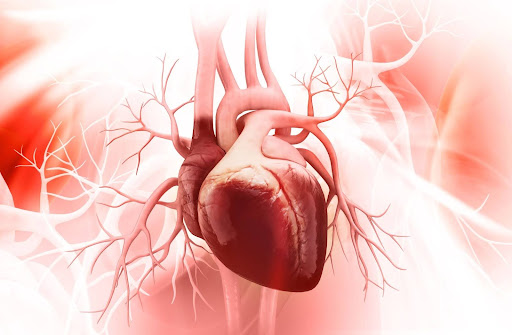
by targetmarket | Mar 29, 2024 | Bloodless Heart Surgery, Heart Surgery
Known as an alternative to open heart surgery, minimally invasive surgery is preferred by many patients. It involves tiny incisions that allow a surgeon to access the heart between the rib bones. This eliminates the need to cut the breastbone. Compared to traditional heart surgery, minimally invasive procedures usually come with less pain and risk as well as a shorter recovery. Here at Minimally Invasive and Bloodless Heart Surgery with Dr. Ciuffo, we’ll dive deeper into the minimally invasive options for high-risk heart surgery. Benefits of Minimally Invasive Heart Surgery There are a variety of advantages of minimally invasive heart surgery. It’s often preferred to high-risk heart surgery because it results in less trauma to the chest and smaller, more discreet scars. It also allows for less blood loss, reduced pain, shorter hospital stays, and a lower chance of infection. How Does Minimally Invasive Heart Surgery Work Every minimally invasive heart surgery is unique. However, most of them involve small incisions in the chest area. You can expect a surgeon to use a special camera device so he can view the heart. During the procedure, you’ll be hooked up to a heart-lung bypass machine so that your blood flow can be maintained throughout the surgery Types Of Minimally Invasive Heart Surgery If minimally invasive heart surgery is an option for you, you’ll work with a surgeon to determine the ideal one. Here’s an overview of some of the most common types of minimally invasive heart procedures: Minimally Invasive Heart Valve Repair: The goal of minimally invasive heart valve repair is to resolve a damaged valve and, in turn, improve... 
by targetmarket | Feb 29, 2024 | Heart Murmur
There’s a good chance you’ve seen your doctor listen to your heartbeat through a stethoscope and look for a heart murmur. Heart murmurs occur when your heart makes an unusual sound. Characterized by a whooshing or swishing sound between heartbeats, a heart murmur is often completely normal and has no cause for concern. In fact, heart murmurs are quite common and often present in healthy individuals without heart problems. Minimally Invasive and Bloodless Heart Surgery with Dr. Ciuffo is here to dive deeper into what a heart murmur is and what you can expect if you or someone you love has one. Types of Heart Murmurs In general, there are two types of heart murmurs, including: Innocent Heart Murmurs Innocent heart murmurs simply mean that there is faster blood flow through the heart valves but there are no problems. They may arise after vigorous physical activity or exercise and are widely seen in patients with anemia or a shortage of healthy red blood cells, or during pregnancy when the heart needs to work more than usual to support the baby. Innocent murmurs are also common in teenagers who are growing at a rapid phase. Abnormal Heart Murmurs Abnormal murmurs can be a symptom of a structural problem in the heart valve or another abnormality that was present at birth or arose later in life. An abnormal heart murmur may also be the result of a heart valve that narrows and hardens, which occurs as we age. It might not show any other symptoms and can only be discovered by a doctor in a stethoscope exam. Symptoms and Causes of... 
by targetmarket | Oct 16, 2023 | Benefits of Minimally Invasive Heart Surgery
In the realm of cardiac and thoracic surgeries, advancements in surgical techniques have led to the development of minimally invasive approaches that offer several advantages over traditional open-heart procedures. Two of these minimally invasive techniques, minithoracotomy, and ministernotomy, have gained prominence in recent years. Minithoracotomy Vs. Ministernotomy While both approaches share the common goal of reducing trauma to the patient, they differ in their specific methods and applications. Here at Minimally Invasive and Bloodless Heart Surgery with Dr. Ciuffo, we will explore the key differences between minithoracotomy and ministernotomy to help you better understand these innovative surgical options. Minithoracotomy Minithoracotomy is a minimally invasive surgical approach that involves making a small incision between the ribs to access the thoracic cavity. It is commonly used for various cardiac and thoracic procedures, including but not limited to coronary artery bypass grafting (CABG), mitral valve repair or replacement, and lung surgeries. Incision Placement One of the primary distinctions of minithoracotomy is the location of the incision. The surgeon makes a small (typically 2-4 inches) horizontal incision on the lateral side of the chest, between the ribs, often below the nipple line. This approach allows access to the heart or lungs without splitting the breastbone (sternum). Use of Rib Spreaders Minithoracotomy may require the use of rib spreaders to gently separate the ribs and create a working space. While this temporarily widens the ribcage, it is less traumatic than a full sternotomy. Versatility Minithoracotomy is versatile and can be used for various cardiac and thoracic procedures. Surgeons can access different areas of the heart and lungs, depending on the specific surgical goal. Reduced... by DrCiuffo | Dec 30, 2022 | Advanced Heart Surgery, Aortic Valve Replacement, Blog, Dr. Giovanni B Ciuffo, Heart Health
A normal functioning aortic valve has three leaflets, usually referred to as cusps, and is positioned at the end of the left ventricle. This valve is the main pump that delivers oxygenated blood to the entire body. An aortic valve replacement is required if someone suffers from Aortic Valve Stenosis or Aortic Valve Insufficiency. These two issues can cause a significant number of problems and can be life-threatening. Understanding the components that are involved in an aortic valve replacement is essential, especially if you are considering one. Dr. Ciuffo takes the time to consider your specific situation before moving forward on a treatment plan. If you are looking for this information to guide you through decisions regarding your healthy heart, this is a great place to start. Today we take a deep dive into aortic valve replacement, so you can have the knowledge you need. When to Consider Aortic Valve Replacement As already mentioned, there are two reasons why someone would need an aortic valve replacement. When suffering from aortic stenosis, the valve is narrow, causing it to be more challenging for the blood to go through. Basically, the muscle in the heart begins to thicken, causing a hissing sound, which is oftentimes confused with a murmur. With aortic valve insufficiency, the valve tends to “leak” when it is closed. This makes the heart work twice as hard to make the blood flow correctly and in the right direction. To repair this, doctors have created a minimally invasive technique that is much safer and easier on patients. What to Consider for an Aortic Valve Replacement Since the breastbone is... by DrCiuffo | Dec 15, 2022 | Blog
When you are enjoying an athletic activity, you will notice your heart beats faster than when you are just resting and reading a book. When you exercise, your body may need three to four times your average cardiac output. This happens because your muscles need more oxygen when you exert energy. So what causes pulse deficit, and what is it? Pulse deficit is when one finds a difference in count between heartbeat and peripheral pulse. So what causes pulse deficit in people? In this blog, we will address what pulse deficit is, its causes, how to take a pulse, symptoms, and treatments. What is Pulse Deficit? Pulse deficit occurs when the heart is contracting, and the pulse is not reaching the periphery. Pulse deficit can be dangerous if not treated properly, this is especially true if heart conditions run in your family. No need to worry because once you know the signs and what causes pulse deficit, you will know to reach out to a doctor to get help for yourself or a loved one. Taking a Pulse If you are wondering if your family member has a pulse deficit, it is important to know how to properly take a pulse. You can begin taking a pulse by putting two fingers on a person’s neck or wrist. When Measuring Pulse in Someone’s Wrist: Have the person’s arm held out straight, with the palm of their hand facing upwards Place your first finger and middle fingers on their wrist, near the base of their thumb Pull out a clock that shows your the seconds clearly, count how many beats you...



